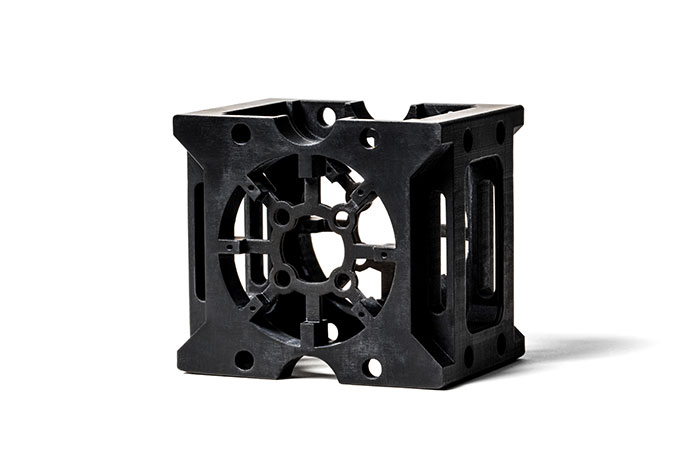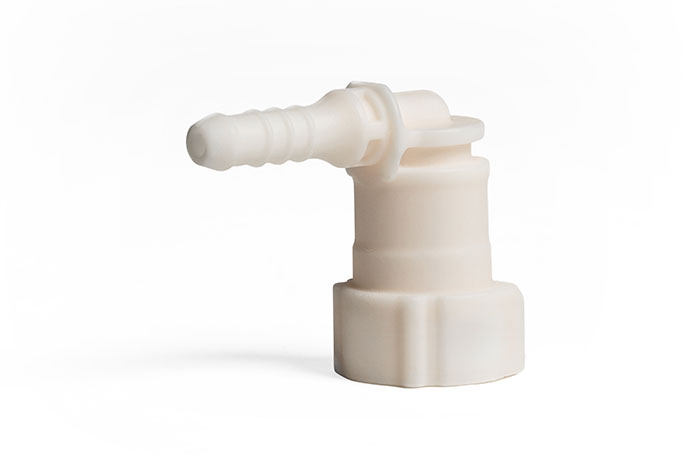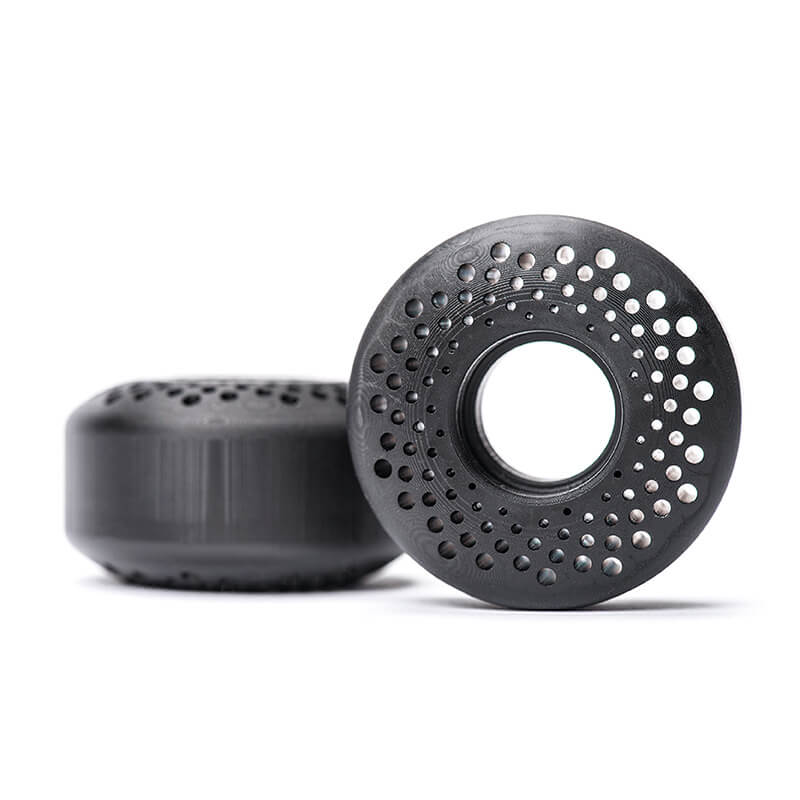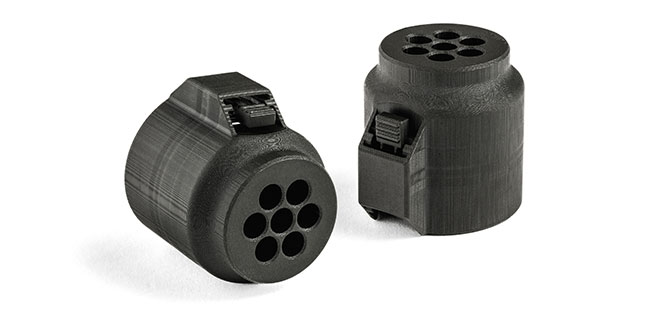
Advanced Photopolymers for 3D Printing
Our DLS and HPS technologies deliver high-quality 3D-printed parts
Certifications ISO 9001:2015 | ITAR
Jump to Section
→ Capabilities
→ Materials
→ Surface Finishes
→ About Carbon DLS 3D Printing
Beyond Prototyping
When your project requires advanced mechanical properties beyond stereolithography (SLA) and PolyJet, explore our advanced photopolymer materials unlocked by Carbon DLS and Axtra3D Hybrid PhotoSynthesis (HPS) technologies. HPS leverages the best features of our popular Carbon digital light synthesis (DLS) printers, such as speed, near-isotropic parts, and smooth surface finish, but adds the greater speed and higher resolution of stereolithography (SLA). HPS and Carbon DLS are worth a close look for manufacturing of your project.

Hybrid PhotoSynthesis (HPS)
HPS technology integrates both a precision laser and a digital light processing (DLP) system to simultaneously image internal and external structures. This dual approach allows the Axtra3D printer to overcome traditional limitations and produce exceptionally detailed parts with unmatched speed and quality.
Common applications for HPS are:
- High accuracy features for testing and validation.
- Production grade parts with excellent throughput.
- Glass-like surface finishes for cosmetic prototypes.

Carbon DLS
Carbon DLS (digital light synthesis) is an industrial 3D printing process that creates functional, end-use parts with mechanically isotropic properties and smooth surface finishes. You can choose from both rigid and flexible polyurethane materials to meet your application needs for high impact-resistance components.
Common application for Carbon DLS are:
- Complex designs that are challenging to mold
- Need for isotropic mechanical properties and smooth surface finish
- Production parts in materials comparable to ABS or polycarbonate
- Durable components for end use
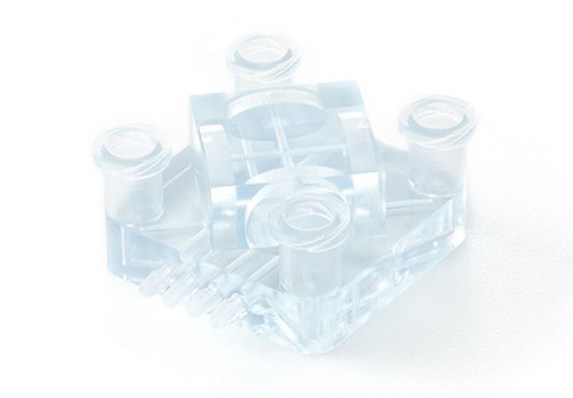
Compare Material Properties
| Material | Color | Tensile Strength | Tensile Modulus | Elongation |
|---|---|---|---|---|
| Carbon RPU 70 | Black | 6 ksi | 245 ksi | 100% |
| Carbon FPU 50 | Black | 4 ksi | 100 ksi | 200% |
| Carbon EPX 86FR | Black | 13 ksi | 480 ksi | 10% |
| Tough Black | Black | 7.4 ksi | 262 ksi | 43% |
| Ceramic-Filled | Off-white | 12.6 ksi | 1,537 ksi | 1.30% |
| Material | Color | Tensile Strength | Tensile Modulus | Elongation |
|---|---|---|---|---|
| Carbon RPU 70 | Black | 41.4 MPa | 1,690 MPa | 100% |
| Carbon FPU 50 | Black | 27.6 MPa | 690 MPa | 200% |
| Carbon EPX 86FR | Black | 90 MPa | 3300 MPa | 10% |
| Tough Black | Black | 51 MPa | 1,806 MPa | 10% |
| Ceramic-Filled | Off-white | 87 MPa | 10,597 MPa | 1.30% |
These figures are approximate and dependent on a number of factors, including but not limited to, machine and process parameters. The information provided is therefore not binding and not deemed to be certified. When performance is critical, also consider independent lab testing of additive materials or final parts.
Surface Finish on HPS Parts
Unfinished
Dots, or standing nibs, remain evident on the bottom of the part from the support structure remnants.
Natural (Default)
Supported surfaces are sanded down to eliminate support nibs.
Custom
Secondary options include a primer or paint that can be applied as well as taps and inserts.

Unfinished
With unfinished, you get varying aesthetics based on build orientation. Dots or standing nibs remain evident on the bottom of the part from the support structure remnants.
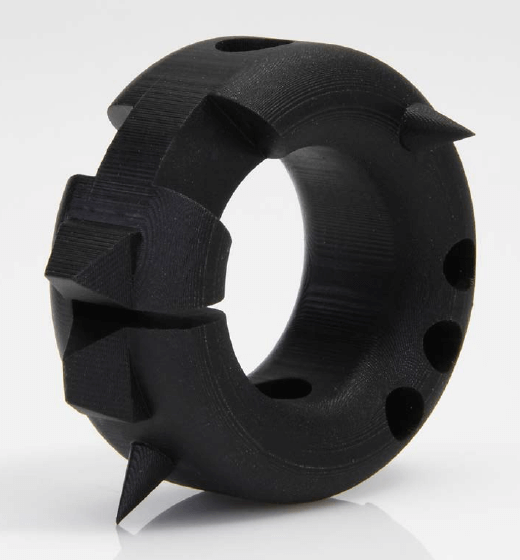
Natural Finish
With natural finishing, you get varying aesthetics based on build orientation. Standing nibs are sanded flat.
How Does HPS Work?
One answer is fast—really fast. Two established technologies team up to create a sum that is greater than its parts. Like Carbon DLS, light is used to quickly harden liquid resin to create various geometries. HPS takes it a step further by adding a laser (as with SLA) to add precision and speed. When one layer is complete, the build platform rises and the process repeats until the part is complete. In the end, you get both the speed of Carbon DLS, and feature details, resolution, and build volume of SLA.
How Does Carbon DLS Work?
Carbon DLS uses CLIP (continuous liquid interface production) technology to produce parts through a photochemical process that balances light and oxygen. It works by projecting light through an oxygen-permeable window into a reservoir of UV-curable resin. As a sequence of UV images are projected, the part solidifies, and the build platform rises.
At the core of the CLIP process is a thin, liquid interface of uncured resin between the window and the printing part. Light passes through that area, curing the resin above it to form a solid part. Resin flows beneath the curing part as the print progresses, maintaining the continuous liquid interface that powers CLIP. Following the build, the 3D-printed part is baked in a forced-circulation oven where heat sets off a secondary chemical reaction that causes the materials to adapt and strengthen.






